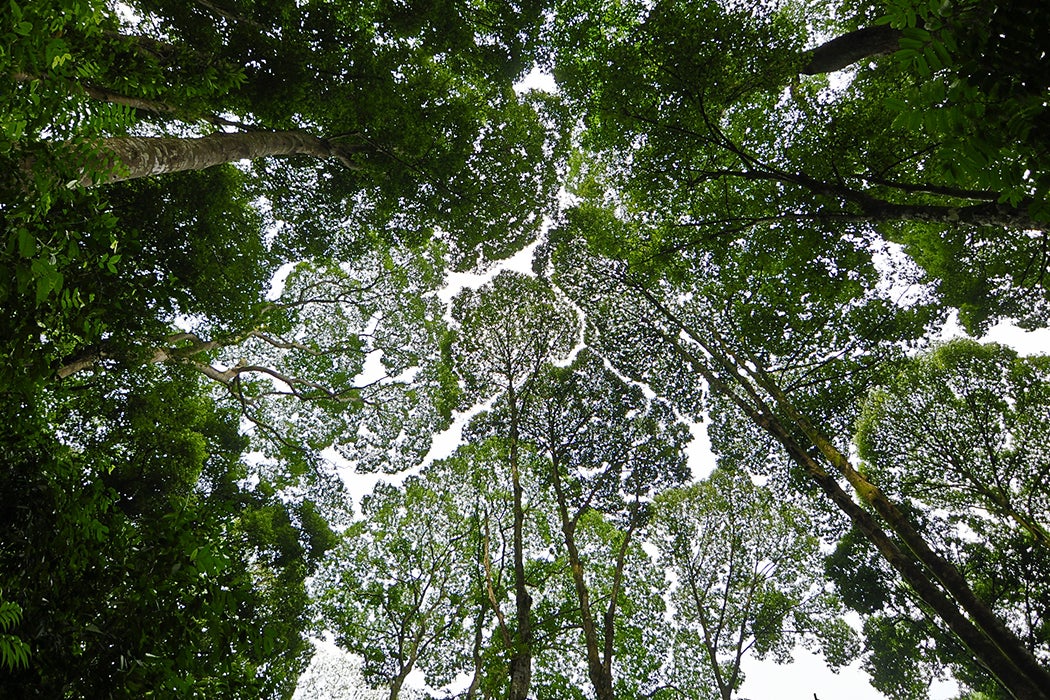In certain forests, when you look up you will see a network of cracks formed by gaps between the outermost edges of the tree branches. It looks like a precisely engineered jigsaw puzzle, each branch growing just perfectly so it almost—but not quite—touches the neighboring tree. This beautiful phenomenon is called crown shyness.
Crown shyness doesn’t happen all the time, and scientists aren’t completely certain why it happens at all. There is some evidence that it most commonly occurs with similarly-aged trees, especially stands of the same species. But it can occur in any forest. One of the seminal papers on the subject, by Francis E. Putz, Geoffrey G. Parker, and Ruth M. Archibald, concerns crown shyness in black mangrove trees in Costa Rica.
Putz and colleagues noticed that the trees, which grow close together, can rub against each other when the wind is strong enough to sway them. The resulting abrasion helps maintain the “shyness gaps;” continued growth would simply result in more abrasion. The presence of broken twigs at the leading edges of the branches adjacent to neighboring branches lends support to the abrasion hypothesis.
If the gaps are caused by abrasion, then it follows that trees in windy areas should exhibit more crown shyness than trees in areas that are less likely to rub together. But biologist Alan Rebertus, writing in Biotropica, found virtually no difference between windy and sheltered stands of trees in a cloud forest. If abrasion is a cause of shyness, it is not the only one. Rebertus notes an alternate hypothesis which holds that the growing tips of trees use light levels to detect when another branch is near and simply stop growing when they’re too close.
Weekly Digest
Another biologist, Miguel Franco, suggests that shyness gaps result from the influences individual trees exert on one another. Trees cannot move, so if they have nearby neighbors, they are forced to compete with them for resources such as light. According to this theory, each tree forces its neighbors into a pattern that maximizes resource collection and minimizes harmful competition. Whether by accident or by design, crown shyness functions as a form of truce between competitors with limited options.
Ecological interactions are complex, so probably there are multiple factors at play. Despite decades of investigations, there is still no consensus view on exactly what causes the beautiful and mysterious phenomenon of crown shyness.







